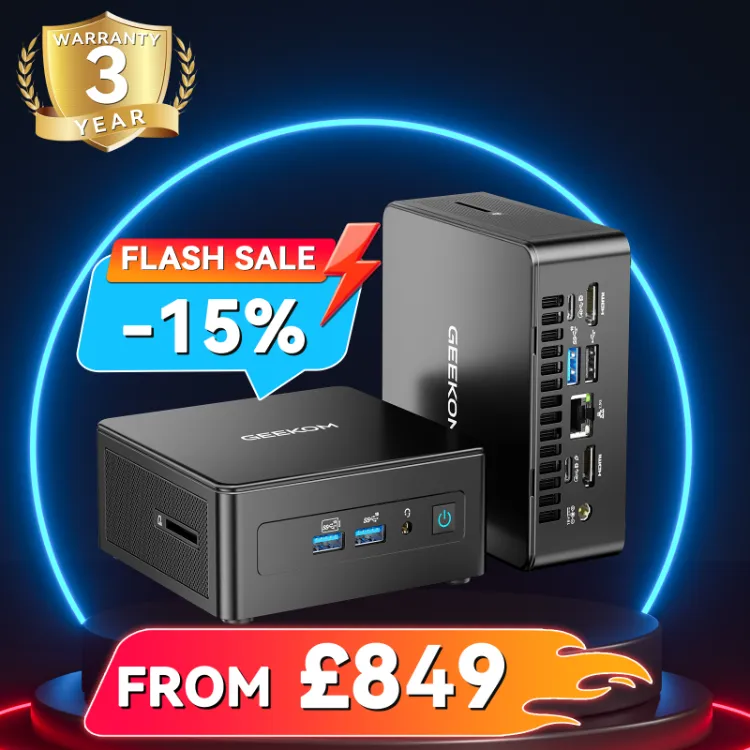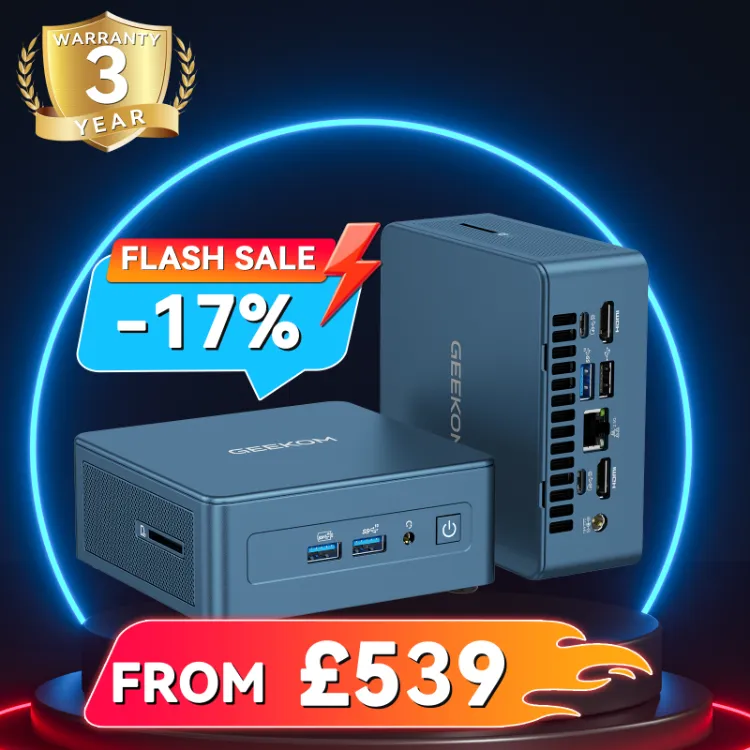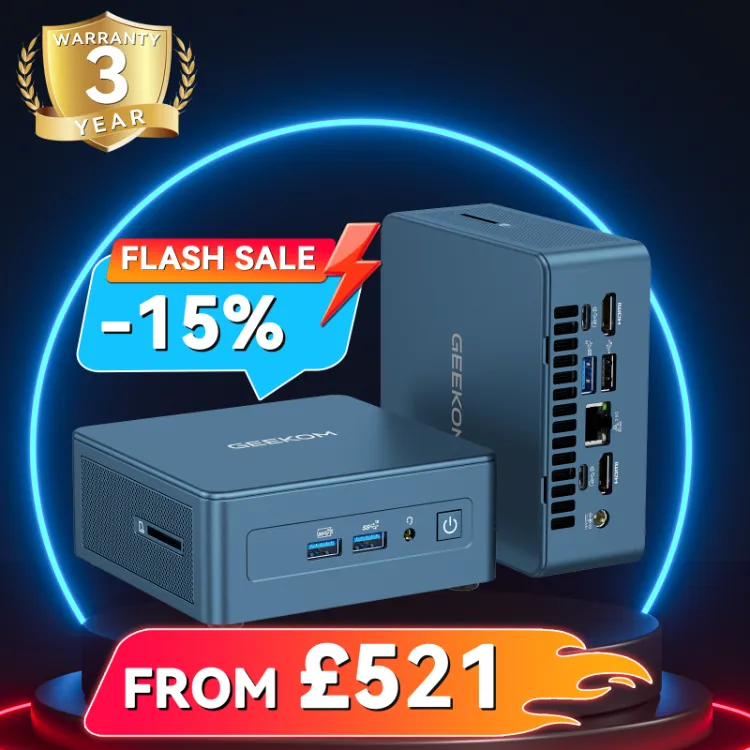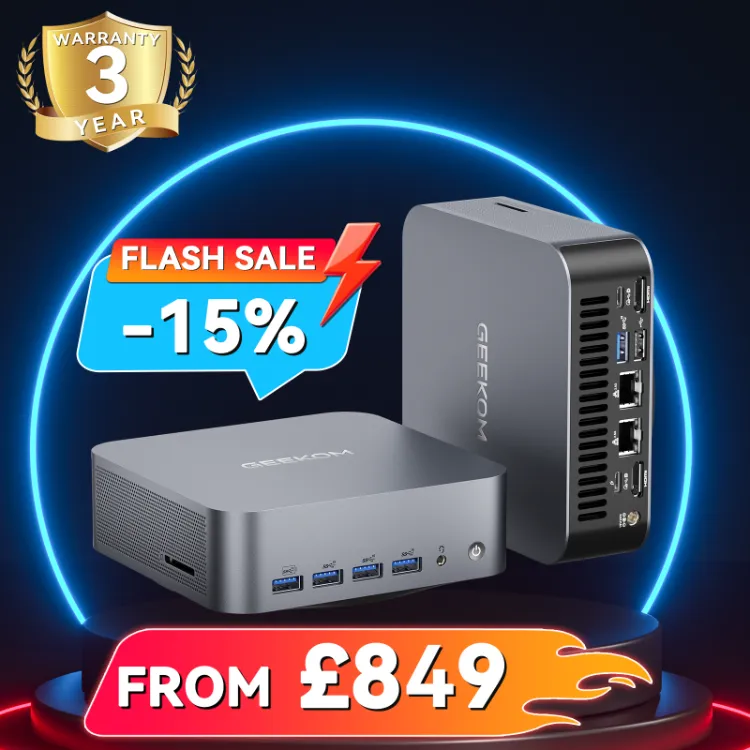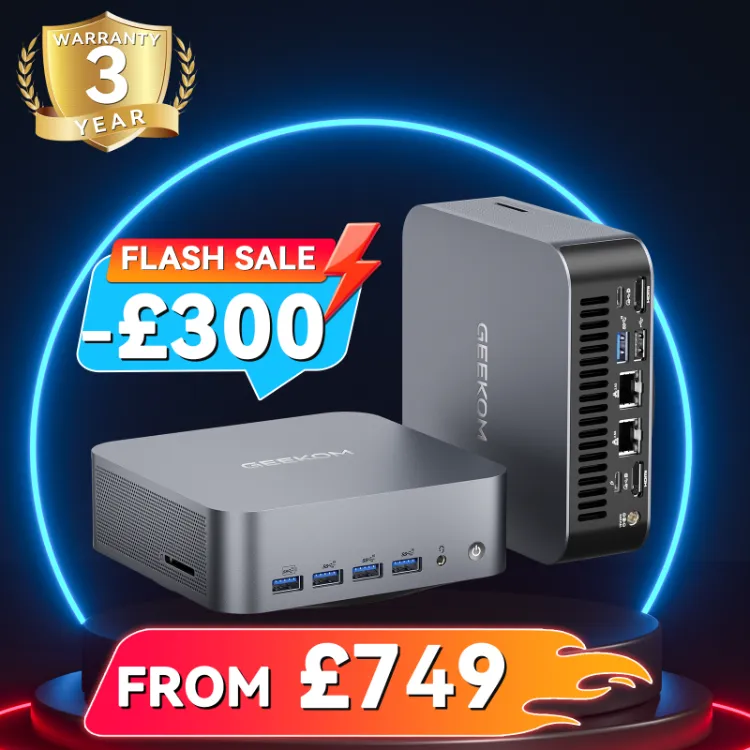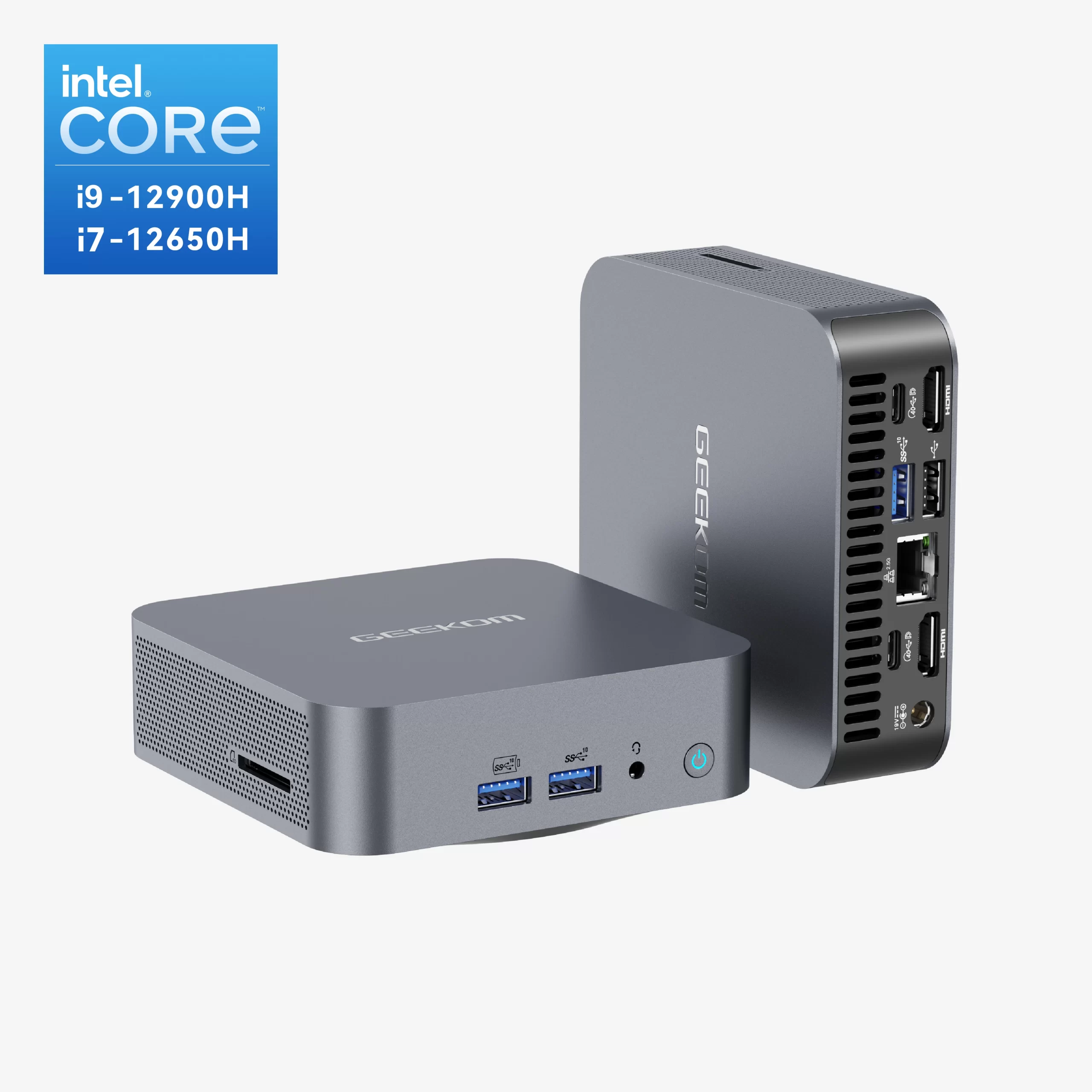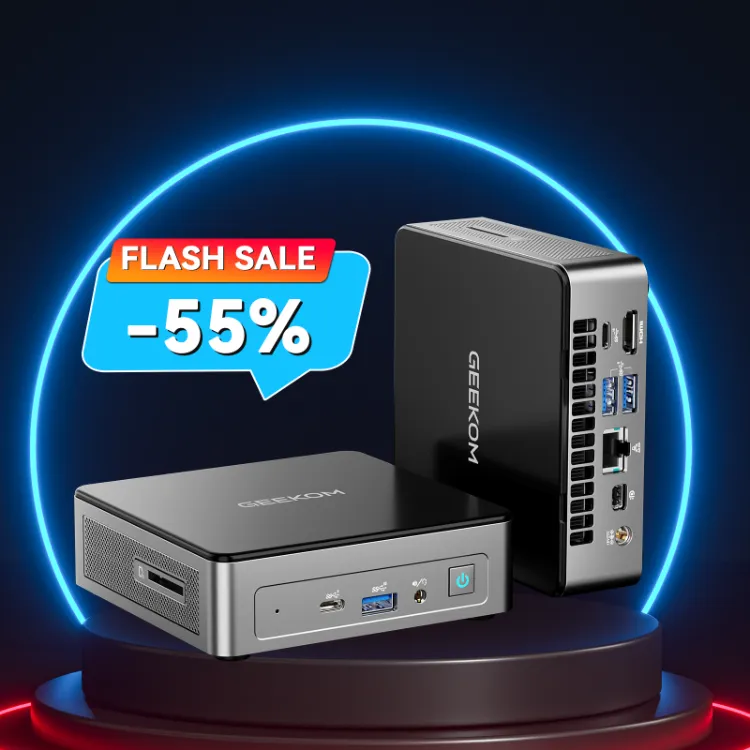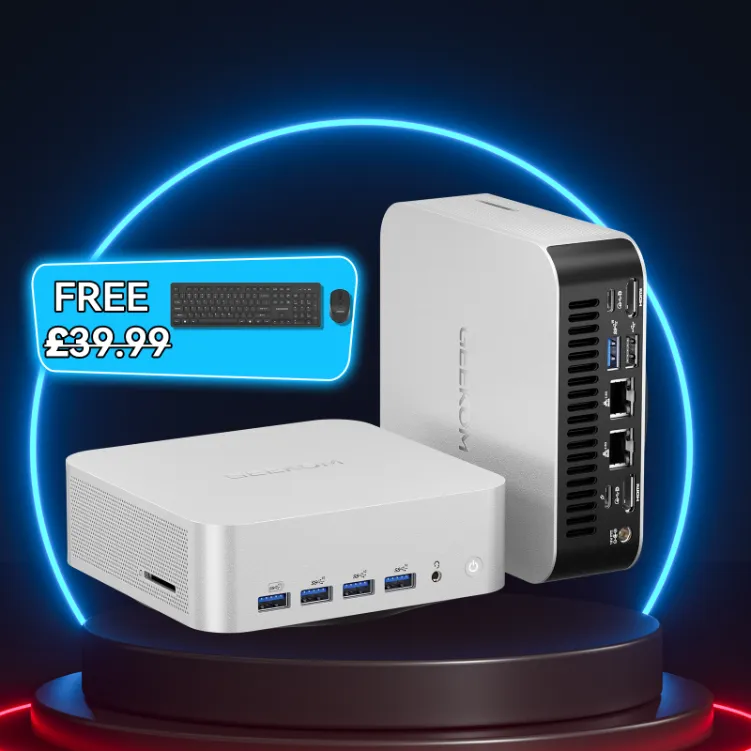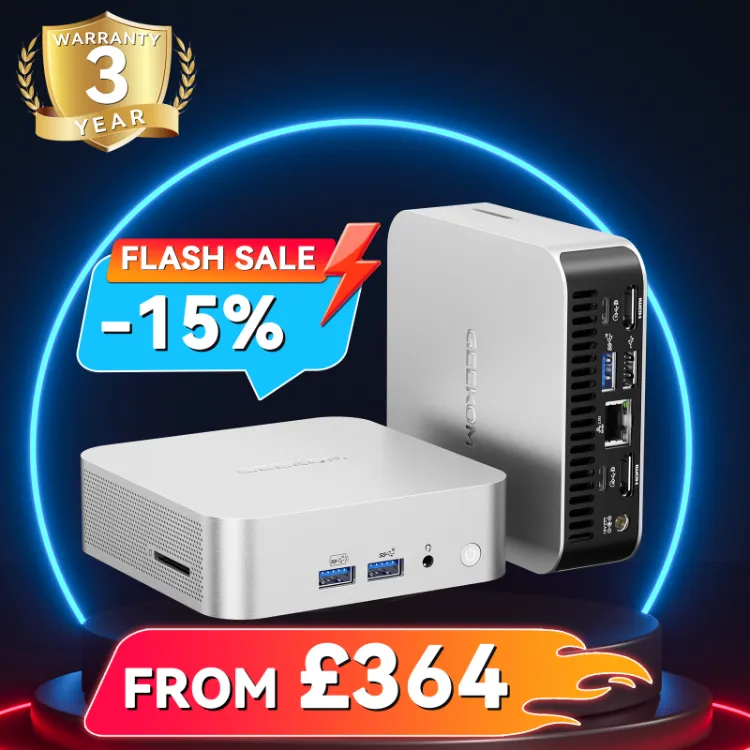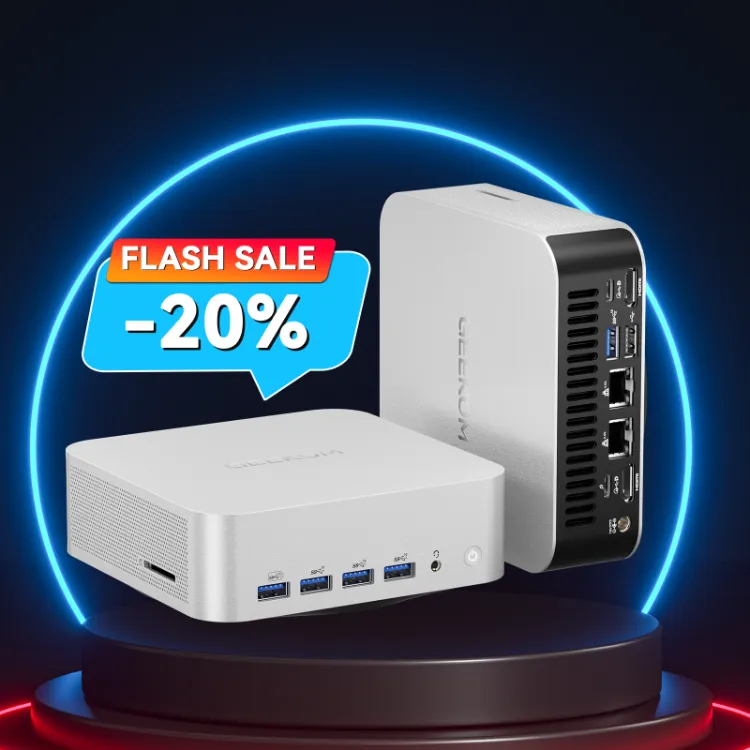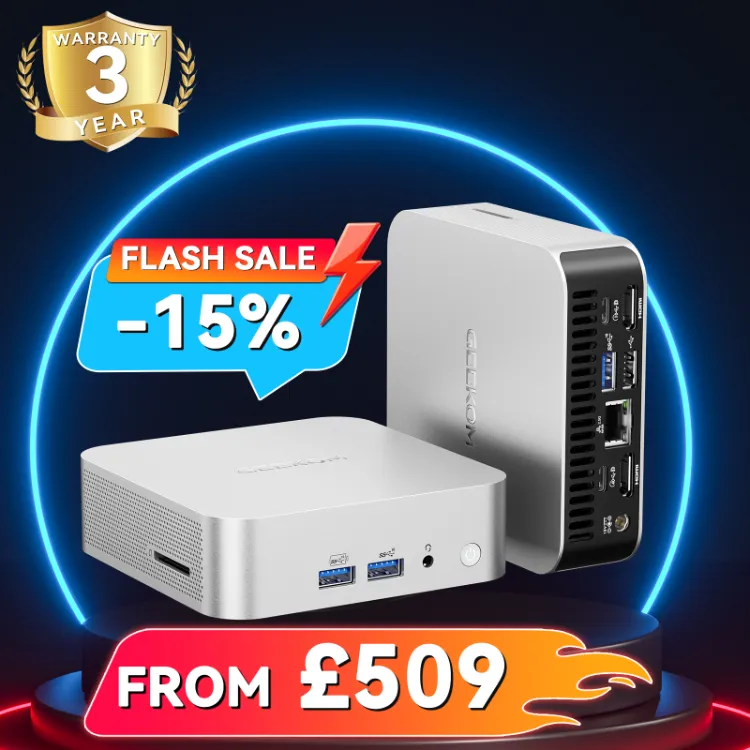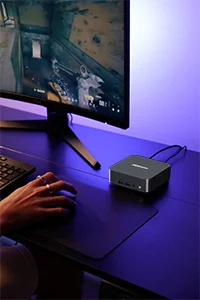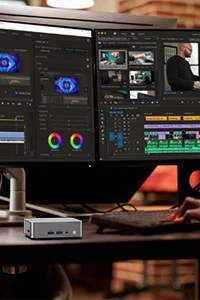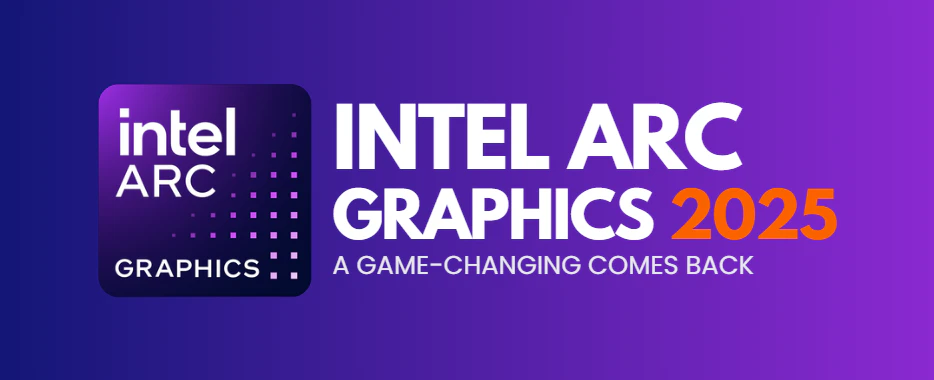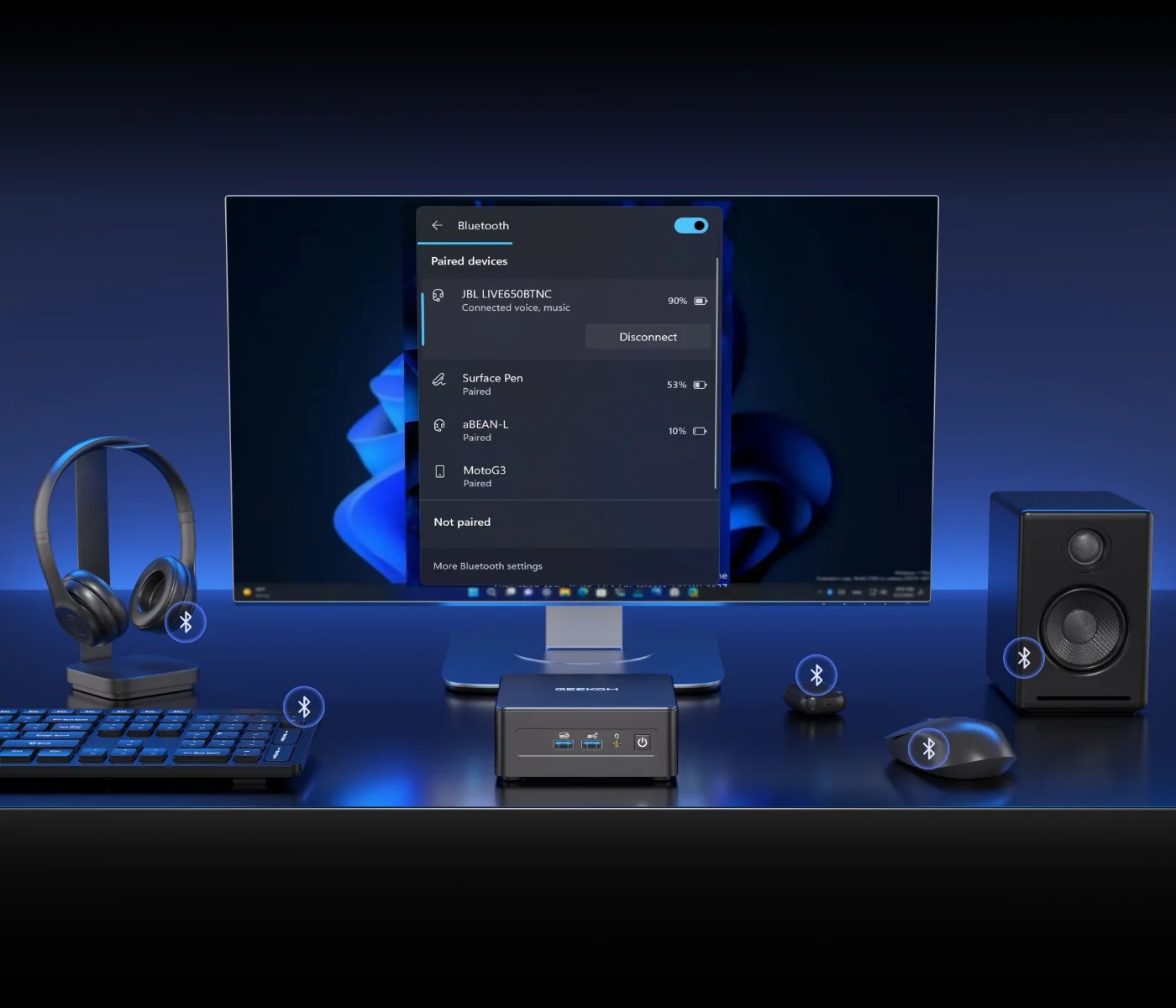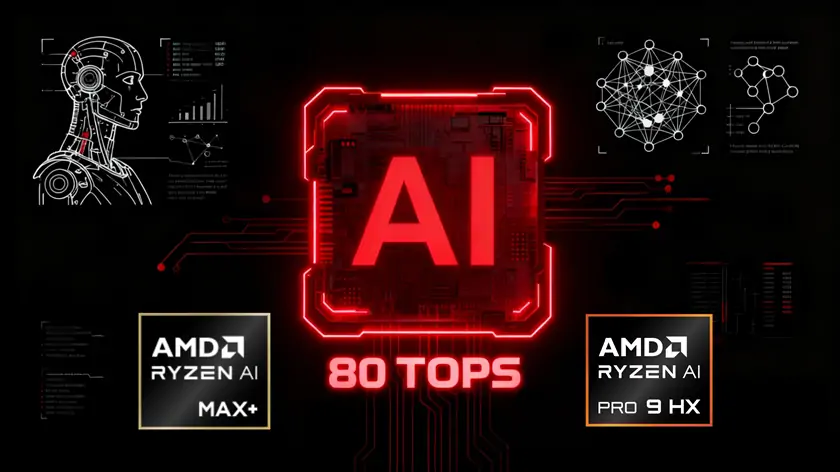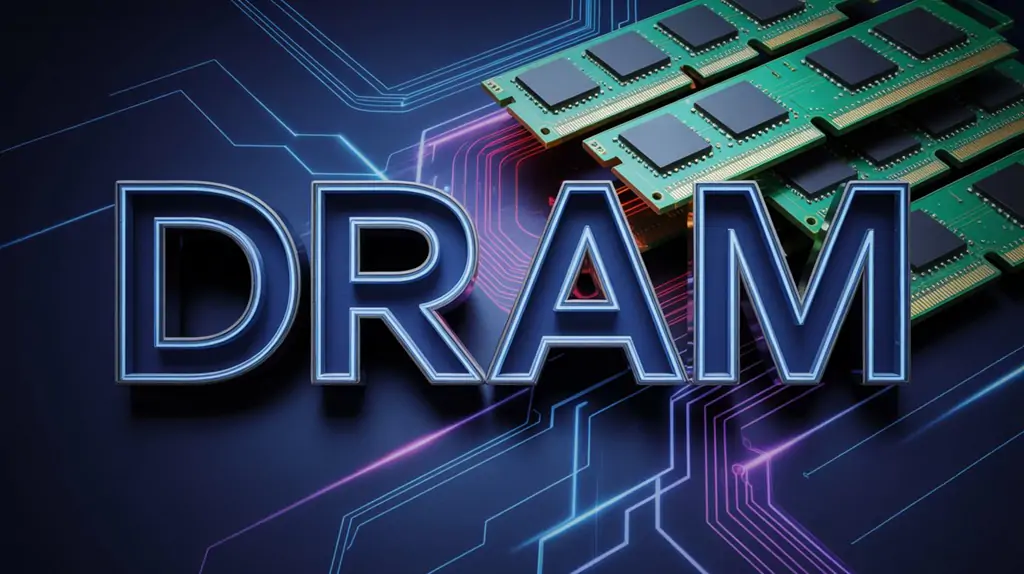Do you remember when Intel attempted to produce video cards in 1998? Sadly, that venture didn’t turn out well at all. As far as the history of GPUs is concerned, the i740 was rather insignificant. It was one of those unfortunate incidents where the company could only erase it from their memory by joking, “what were they thinking?” Nevertheless, Intel is here again, and this time it definitely feels very different.
After 25 years, all the unfortunate events are a thing of the past. During the past years, Intel has silently observed NVIDIA and AMD battling while secretly building something that no one expected. It is a message that Intel’s Arc line of graphics cards carries: not just another bunch of cards but a refusal of the notion that one has to be either green or red.
The whole world was in a state of surprise when Intel did not aim to make the fastest GPU on the market. Instead, they chose to identify the real needs of the gamers and then produce that. Rival marketers are still discussing whether 8GB is enough VRAM, but the topic here is 16GB. Content creators are very happy with AV1 encoding. XeSS is a technology that also runs on other people’s hardware. The price is less than what you expected.
The very clever part? AMD was trying to be everything for everyone at the same time, whereas NVIDIA was focusing on the AI market. Intel saw a big gap and went right in to fill it. PC gamers don’t really go for RTX 4090s in 4K setups. Most of the time, it’s 1080p or 1440p, they want decent ray tracing, and they are hoping that their graphics card won’t be pricier than their entire PC.
Intel’s Xe-HPG architecture wasn’t designed to win benchmark races. Instead, it was built to be like a good all-around player for GPUs: it can fulfil any need you may have. Better video encoding than others. AI accelerating your work allows you to achieve even tasks that you didn’t realise you wanted to do. Media processing can cope with whatever codec the internet throws at it.
Click to see GEEKOM IT15 AI Mini PC with Intel Arc graphic offering Ray Tracing and XeSS:
- Intel® core™ Ultra 9-285H or U5-225H
- Powered by the Intel Core Ultra 9-285H with 99 TOPS (NPU+GPU+CPU) AI performance
- Intel® Arc™ 140T GPU, supports Ray Tracing and XeSS
- 2.5G Ethernet port, intel® bluetooth® 5.4 and Wi-Fi 7
- Blazing Fast with USB4 and quad-display support
- Innovative and efficient cooling system – IceBlast 2.0
- Sleek, compact, scratch-resistant, and VESA-compatible
- Pre-installed with Windows 11 Pro, ready to use
Why Intel’s Timing Was Perfect
GPU shortages from 2020 to 2022 left a lot of people angry. Prices went through the roof. Cards disappeared from shelves faster than concert tickets. Gamers were stuck paying scalper prices or making do with whatever they could find. Intel watched all this chaos and thought, “We can fix this.”
When Arc cards finally hit the market, Intel made three promises that actually mattered: good products, reliable supply, and fair pricing. Sounds simple, right? But after years of GPU drama, simple promises felt revolutionary.
Intel didn’t try to compete with the GPU RTX 4090 crowd. Smart move. Instead, they looked at Steam’s hardware surveys and noticed something obvious that everyone else seemed to miss: most gamers are playing at 1080p and 1440p. They want ray tracing, but they don’t need to max out Cyberpunk 2077 at 4K. They want AI upscaling, but they’re not training neural networks in their spare time.
The business strategy makes sense when you think about it. XeSS works on NVIDIA and AMD cards too. AV1 encoding benefits everyone in the content creation space. Intel’s development tools don’t lock you into their ecosystem. It’s almost like they learned something from watching other companies build walled gardens that nobody really wanted.
Manufacturing gives Intel advantages that pure chip designers can’t match. They’ve got partnerships with TSMC for the latest process nodes, plus their fabs as backup. When supply chains get weird – and they always do – Intel has options that companies like NVIDIA just don’t have.
The market Intel entered was basically begging for disruption. NVIDIA was making bank on AI and data centre sales, so gaming felt like an afterthought. AMD was stretched thin trying to compete in CPUs and GPUs simultaneously. Intel saw the opening and drove a truck through it.
Xe-HPG: Building a GPU From Scratch

The benefits of starting over are clear. Backwards compatibility with old architectures and design decisions that made sense fifteen years ago was not a problem for Intel’s engineers. This is what happens when you design a GPU to handle workloads in the 2020s.
A Xe-Core, which contains 16 Vector Engines, is the main constituent. Xe-Core consists of 128 shader units; therefore, each Vector Engine can perform 8 FP32 operations per clock. These companies do something similar, but Intel made sure that everything was working better to save power and keep temperatures low. It is pointless to make the fastest GPU if it is very noisy.
XMX engines are where most of the exciting stuff happens. These AI acceleration units can handle multiple types of data, such as FP16, BF16, INT8, INT4, and INT2, as inputs. Every clock cycle, an XMX unit can carry out 128 FP16 operations, 256 INT8 operations, or 512 INT4/INT2 operations. This is not just a catchy phrase. In essence, it means that the Arc cards can perform tasks such as AI-assisted content creation and machine learning inference, which are too complex for smaller GPUs in this price range.
Intel has made their render slice design in a way that it is more modular. One slice consists of four Xe-Cores and the related texture and render output units. The Arc A770 design uses the ACM-G10 die’s eight slices. A cheaper option is the A750, which is achieved by turning off one slice. Better yields, more obvious product differentiation, and the opportunity to discard chips according to how good they turned out are all the perks of smart production.

Memory bandwidth is what really matters. The 256-bit GDDR6 interface on the Arc A770 can transfer data at 560 GB/s, which is significantly more than other cards at the same price. The A770’s 16 GB frame buffer is not just something mentioned in ad campaigns; it’s actually a perfect fit for today and the future of high-resolution content creation and gaming scenarios that continuously consume VRAM.
Arc does its best work when it comes to processing media. Two Xe Media engines do video encoding and decoding. They support H.264, H.265, and, here’s the kicker, AV1. Intel is the first company to put hardware for encoding AV1 on the market for consumer graphics cards. Everyone else is still working to make H.264 better, but Intel is already making plans for the next generation of video standards.
Ray tracing is based on NVIDIA’s methods instead of AMD’s early ones. Intersection calculations and traversal operations are done by separate ray tracing units, which frees up shader resources for other tasks. The Arc’s ray tracing performance won’t make RTX 4080 owners look bad, but when you pair it with XeSS upscaling, it delivers solid 1440p ray tracing gaming.
Support for APIs takes care of everything. DirectX 12 Ultimate means that all new games can run on it. OpenGL 4.6 and Vulkan 1.3 can run both professional programs and older games. OpenCL 3.0 lets you use computers for more than just games. You can use them for scientific computing, cryptocurrency mining, or any other weird projects you’re working on.
The Numbers Game: How Arc Stacks Up
Specs don’t tell the whole story, but they’re a good place to start. Intel’s approach to spec allocation reveals priorities that differ from traditional GPU thinking.
| What You Get | Intel Arc A770 | Intel Arc A750 | NVIDIA RTX 3060 | AMD RX 6600 XT |
|---|---|---|---|---|
| Architecture | Xe-HPG | Xe-HPG | GA106 Ampere | Navi 23 RDNA2 |
| Process | TSMC N6 | TSMC N6 | Samsung 8nm | TSMC 7nm |
| Cores | 32 Xe-Cores | 28 Xe-Cores | 28 SMs | 32 CUs |
| Shaders | 4096 | 3584 | 3584 | 2048 |
| RT Units | 32 | 28 | 28 | 32 |
| AI Stuff | 512 XMX | 448 XMX | 112 Tensor | None |
| Base Clock | 2100 MHz | 2050 MHz | 1320 MHz | 1968 MHz |
| Boost Clock | 2100 MHz | 2050 MHz | 1777 MHz | 2589 MHz |
| Memory | 16GB GDDR6 | 8GB GDDR6 | 12GB GDDR6 | 8GB GDDR6 |
| Memory Bus | 256-bit | 256-bit | 192-bit | 128-bit |
| Bandwidth | 560 GB/s | 512 GB/s | 360 GB/s | 256 GB/s |
| Power Draw | 225W | 225W | 170W | 160W |
| Launch Price | £330 | £290 | £329 | £350 |
The memory configuration is definitely the first thing that comes to mind when the A770’s 16GB frame buffer is talked about. It stomps all other GPUs’ memory capacity in the same price range by far. And it is not only an empty claim but really the case, as there is plenty of space for gaming at high resolution, content creation, and memory-hungry tasks if you are a developer.
Power management by Intel is a conservative strategy, which is reflected in the clock speeds. They are not trying to overclock the Arc cards as much as some competitors, thus providing a base and boost more stable clock, which suggests that the thermal design is probably quite good. Usually, continued performance is more important than a short burst of the highest numbers.
Intel’s story about GPUs’ future is emphasised by the AI accelerator number. 512 XMX units on the A770 give significantly more AI processing power than RTX 3060’s 112 Tensor cores and totally overmatch AMD’s, which has no dedicated AI hardware. This decision will not only make XeSS gaming achieve higher performance, but also content creation and professional tasks will benefit.
Graphics features support demonstrates that Intel is still attempting to stick to the most up-to-date gaming standards. DirectX 12 Ultimate conformity suggests that the Arc card retains support for hardware ray tracing, mesh shaders, variable rate shading, and sampler feedback. All these contemporary graphics technologies definitely make their intended contribution and play their function in the envisioned way.
Display connectivity is pretty representative of current multi-monitor work environments. The capability to run up to four displays simultaneously using DisplayPort 2.0 and HDMI 2.1 outputs provides one with a wide range of choices in terms of gaming, productivity, and content creation setups. In fact, DisplayPort 2.0 places Arc in good standing for the future of high-resolution and high-refresh-rate applications, even though the presence of these displays in the market is still very minuscule.
Power efficiency metrics position Arc within the competitive landscape, even with higher TBP figures. The A770’s power consumption of 225W is higher than RTX 3060’s 170W, however, you get more features and a bigger memory buffer. Intel’s Endurance Gaming mode allows users who value efficiency more than maximum performance to select from a range of options.
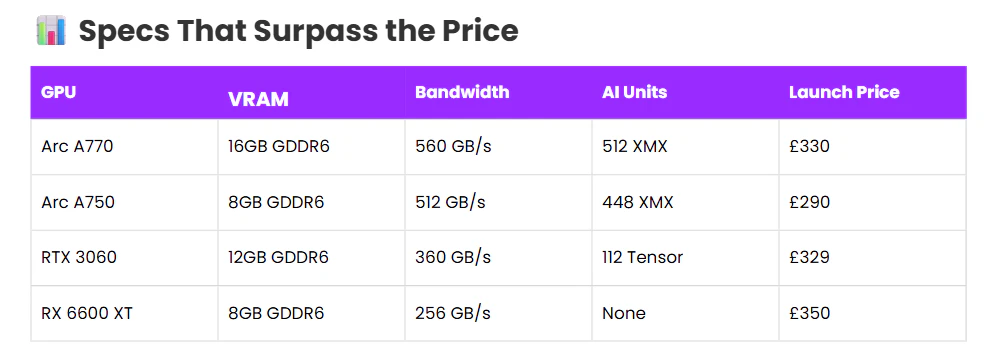
XeSS: Intel’s AI Upscaling That Actually Works
XeSS is Intel’s project in the AI upscaling space that directly targets NVIDIA’s DLSS and AMD’s FSR. The main difference between XeSS and the latter is not only the technical implementation but also the approach to the philosophy of cross-platform compatibility and image quality optimisation.
This way of working highly depends on temporal reconstruction, which means that it is going to take into account multiple frames of data from the game and then upscale the lower-resolution images in a smarter way. Instead of only referring to the spatial upscaling techniques, XeSS employs motion vectors, depth information, and exposure data to help it complete the high-resolution parts that were missing in the low-resolution input frame.
XeSS’s two-mode concept represents Intel’s intention to be a committed player in the ecosystem-building arena. The program is adapted to use the XMX AI units on Arc GPUs for the best results in performance and quality of images. But this is the smart part: the technology also has a mode without hardware that operates with shaders, and this means that it is possible to run it on the PCs of the other competitors. Cards from NVIDIA and AMD can run XeSS as well, only they cannot do it like Arc cards do.
Image quality comparisons reveal XeSS’s advantages over other technologies of the same type. The Digital Trends team has done a lot of tests for XeSS in different games, and it turned out that XeSS is always more successful than AMD’s FSR in saving details and keeping the timeline stable. XeSS is very good at complex lighting situations and moving objects in very demanding games like Cyberpunk 2077, Returnal, and Marvel’s Spider-Man.
Performance scaling across XeSS’s four quality modes gives more choices for various gaming scenarios. The Ultra Quality mode results in a picture very close to native resolution, and performance is increased by 15-20% without the loss of eye-catching details. Quality mode is the very good middle ground between 25-30% performance gain and small visual defects. Balanced and performance modes provide higher scaling for situations where the number of frames is more important than the highest image quality.
Developers are continuously adding more and more games that support XeSS as they recognise the technology’s benefits. Top games such as Call of Duty: Modern Warfare II, Cyberpunk 2077, Death Stranding Director’s Cut, and Hitman 3 have already got XeSS in their arsenals, and more games are following suit by updating their releases from time to time.
The XeSS connection procedure is uncomplicated for software developers to grasp. The technology demands that game engines deliver motion vectors, depth buffers, and exposure information—data that most modern engines already produce for other reasons. This less complicated integration route boosts the adoption rate compared to more complicated upscaling solutions.
The actual gaming performance with XeSS turned on completely changes the potential of Arc cards. In games utilising ray tracing, where raw performance could be a challenge, XeSS offers the extra capacity needed for fluent 1440p gaming. Cyberpunk 2077 with ray tracing on is no longer just a dream; it is reality at high settings when XeSS Quality mode compensates for the performance deficit caused by the ray-traced reflections and lighting.
Gaming Performance: Where Arc Actually Shines
The performance of Arc graphics cards is entirely different from what people generally think about GPU scaling. Such cards are different from most graphics cards that exhibit consistent performance decreases when resolution is increased. Arc cards are sometimes shown to be better at 1440p than 1080p in some games. This very surprising behaviour of the graphics card clearly indicates to us that the modern GPU architecture favours higher parallelism workloads.

TechRadar‘s thorough testing experiments have identified Arc A770’s best at 1440p resolution. 54 fps was the minimum frame rate that the card recorded while averaging 103 fps at 1080p, but the 1440p results are somewhat more interesting. The A770 is at 78 fps on average with stable minimum frame rates and is offering the most diverse titles for really playable 1440p gaming.
Further corroboration is available from Tom’s Hardware’s resolution scaling behaviour analysis of Arc. In going from 1080p Ultra to 1440p Ultra settings, the A770 only drops performance by 22%, while the rival AMD and NVIDIA cards have 29% performance losses that come to mind. This relatively small scaling penalty is a sign that the Arc’s architecture is more efficient in the handling of higher-resolution tasks than its competitors.
The ray tracing performance is one of the most important tests for any graphics device of the current generation. Arc A770’s 32 ray tracing units greatly contribute to the gaming experience when ray-traced games are in focus, especially if XeSS upscaling is included. Cyberpunk 2077 with medium ray tracing settings and XeSS Quality mode, the A770 still runs at 60+ fps at 1440p resolution—quite remarkable performance for a GPU priced at £350.

Driver optimisation is still the main factor affecting Arc’s gaming performance positively. Intel often provides driver updates for gaming performance issues and game-specific optimisations. This continuous improvement means Arc cards’ performance will get better with time, hence more value for early adopters.
Arc performs best in DirectX 12 and Vulkan games. The Xe-HPG architecture is perfect for software using new APIs that implement parallel processing and advanced graphics features. However, older DirectX 11 games sometimes show inferior performance. Nevertheless, driver updates keep fixing these problems.
Looking at price-to-performance ratios makes the competitive positioning very clear. The Arc A770’s £350 price goes against RTX 3060’s £329 MSRP and provides 16GB VRAM instead of 12GB, better memory bandwidth, and some additional features such as AV1 encoding. This becomes even more true if one includes A770’s content creation workflow advantages into the equation.
The performance of Esports gaming is on par with the expectations of competitive players. Achieving high refresh rate gaming at 1080p is no problem in popular titles such as Counter-Strike 2, Valorant, and League of Legends. A lot of people pick Arc cards for competitive gaming because of their characteristics of low latency and stable frame delivery.
Content Creation: The AV1 Revolution
The content creation capabilities of Arc graphics cards represent perhaps their most compelling advantage over competing products in the graphics market range. Besides, the fact that Arc has dedicated hardware for AV1 encoding means it is definitely ahead of the whole graphics card market in the capabilities that are not going to appear in competitors’ products for the next few years.
Tom’s Hardware‘s extensive testing of Arc’s AV1 encoder reveals performance that can be compared to a revolution. According to the VMAF quality measure devised by Netflix, Intel’s AV1 encoder gave 83 points at 3.5 Mbps bitrate and 90 points at 6 Mbps – numbers that surpass all H.264 hardware encoders that compete. NVIDIA’s NVENC, however, was only able to achieve 71 points at 3.5 Mbps, whereas AMD’s AMF encoder had equally poor performance.
The practical implications of superior AV1 encoding extend so far beyond high benchmark scores that it can be of great help. Creators can use visual quality comparable to that of H.264 encoded at about half the bitrate or relatively higher quality at the same bitrate. Since the technology operates more efficiently, it makes less use of storage space, uploads faster, and is cheaper in terms of required bandwidth for streaming.

Arc’s AV1 features offer a perfect chance for streaming applications to boost performance. YouTube and Twitch are two platforms that have incorporated AV1 playback among their main features. This backing enables streamers to raise the bar by providing higher-quality content within the bandwidth constraints they have. The 3.5 Mbps sweet spot found in the experiments perfectly matches the typical streaming bitrate limitations.
The correlation between professional video production workflows and AV1 encoding is positive to a large extent. Premiere Pro 24 beta testing reveals that Arc A770 is 15-20% superior in encoding tasks to a similarly priced RTX 4060 from the same brand. Professionals in the video production field may be attracted to the option of hardware acceleration and the better quality that Arc cards provide for their work.
AV1 demonstrates its commitment to the future within the archive and distribution sectors. Libraries for content encoded in AV1 use significantly less storage while preserving the same quality, which makes the Arc cards indispensable for those who run organisations with big video archives. Additionally, the fact that the AV1 codec is royalty-free implies that there are no licensing issues to be solved, as is the case with other codecs.
In regard to live streaming apps, the performance of real-time encoding takes the centre stage. Arc’s AV1 encoder does not compromise on quality even when it is used in real-time mode, unlike software encoders that have to rely on offline processing to get the best results. Therefore, this feature allows high-quality live streaming that, hitherto, was out of reach for consumer hardware.
Professional Workloads and AI Computing
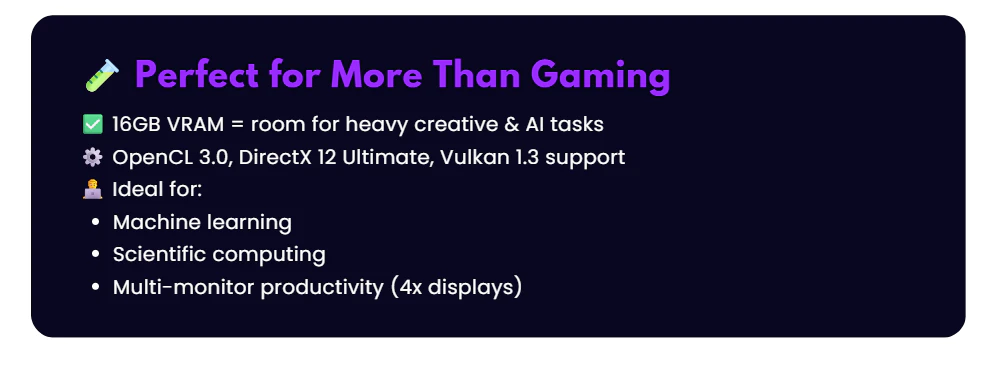
Arc graphics cards extend beyond gaming into professional computing territories where their unique capabilities provide genuine advantages. The powerful AI processing power, wide range of API support, and modern architecture open up new opportunities in many areas, from scientific computing to machine learning development.
The oneAPI ecosystem from Intel gives professional Arc applications a software base. Developers can use the Intel Extension for PyTorch to put machine learning models directly on Arc hardware and use the 512 XMX AI acceleration units for inference tasks. This feature makes Arc cards usable AI development platforms that are affordable for consumers.
OpenCL 3.0 support opens doors for general-purpose computing applications. With Arc’s parallel processing, you can use it for scientific simulations, financial modelling, and engineering analysis programs. The combination of substantial compute power and large memory buffers makes Arc cards suitable for workloads that traditionally required expensive professional graphics cards.
Content creation applications beyond video encoding benefit from Arc’s capabilities. Image processing, 3D rendering, and CAD applications can utilise Arc’s compute resources and large VRAM allocation. The 16GB frame buffer on A770 provides headroom for complex scenes and high-resolution assets that would overwhelm cards with smaller memory configurations.
Multi-display productivity setups leverage Arc’s comprehensive display support. Professional workflows often need more than one monitor for things like writing code, analysing data, or making content. Arc cards’ support for four simultaneous displays through modern interfaces provides flexibility for demanding productivity environments.

Development and testing environments benefit from Arc’s modern feature set. Game developers, graphics programmers, and software engineers can use Arc cards to test applications across different GPU architectures. The combination of modern APIs, AI acceleration, and competitive pricing makes Arc attractive for development workstations.
What Intel Got Right (And Why It Matters)
Intel Arc graphics cards have completely changed the way mid-range GPUs compete with each other. Through innovative architecture, forward-thinking feature sets, and aggressive pricing, Intel has created a compelling alternative that forces the entire industry to reconsider its approach to mainstream graphics cards.
The success of Arc extends beyond Intel’s fortunes. By introducing genuine competition into a market dominated by two players, Intel has created conditions for accelerated innovation, improved pricing, and expanded consumer choice. Whether measuring raw gaming performance, content creation capabilities, or future-proofing features, Arc cards provide value propositions that didn’t exist before Intel’s return to discrete graphics.
The technology foundations Intel has established with Xe-HPG architecture and XeSS upscaling create platforms for continued development and improvement. As software optimisation continues and new applications emerge, Arc cards should become increasingly capable and valuable to their owners.
Market share growth, while starting from zero, shows promising trends in certain regions. Korean market data indicates Intel gaining meaningful share against established competitors, suggesting that focused marketing and competitive pricing can overcome entrenched brand preferences.
Future product roadmaps suggest Intel’s commitment extends well beyond the current Arc generation. Battlemage and Celestial architectures promise continued innovation and performance improvements. Intel’s long-term investment in graphics technology indicates a serious intent to establish a permanent market presence.
The broader implications for GPU computing extend into emerging applications like AI inference, content creation, and scientific computing. Intel’s approach to open standards and cross-platform compatibility could influence how the industry approaches these growing markets.

In the eyes of customers, Intel Arc is more than just another graphics card choice; it is the return of real competition to a market that had become stale. The ripple effects of Intel’s entry will benefit graphics card buyers for years to come, regardless of which brand they ultimately choose.
Intel didn’t just build another GPU. They made a statement about what graphics cards should be in 2025 and beyond. Whether you want buy mini PC with an Arc card or not, you’re benefiting from Intel’s decision to shake up a market that desperately needed shaking.
👉Click to learn Is Intel Iris Xe Graphics Good?


